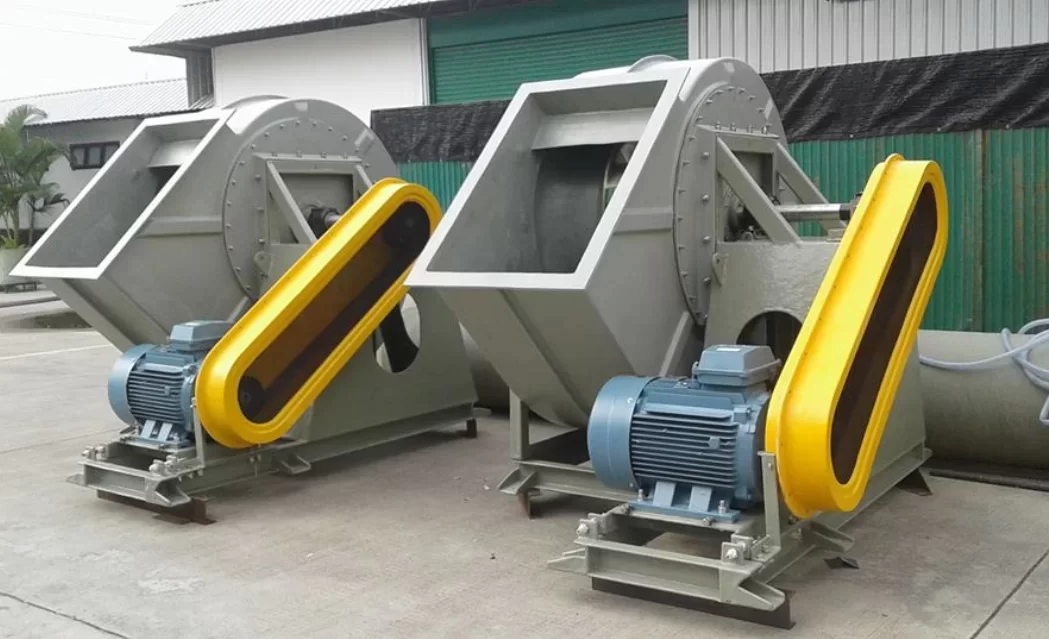
For lubricant, the frequently filling-in should be done as the recommended duration in the manual which depends on the Horse Power (H.P.) of motor, dirty conditions and temperature of motor coils.
For cleaning the V-Belt Drive, use fine-sanded cloth. Avoid using any cleaning materials which are hard or sharp to prevent the V-Belt from being damaged.
Constantly, test the tightness or looseness of the V-Belt Drive. In case that the V-Belt Drive is not appropriately leveled which may cause the vibration, reinstall it with proper tension. When the damages which affect the overall operation system are detected on the V-Belt Drive, consider for the necessary replacement. Generally, the lifetime of the V-Belt Drive is around 1-3 years depending on the operations. If the FRP Centrifugal Blower is continuously operated for 24 hours without being stopped, the service life of the V-Belt Drive may be shorter.
In addition, the filling of bearing lubricant before shutting the FRP Centrifugal Blower for a long maintenance and monthly turning of bearing shaft can help to prevent to the bearing erosion.
Moreover, the positions and tightness of every nut of FRP Centrifugal Blower must be tested. If there is any loose nut, it has to be retightened as previously. Also, the marker should be applied for identifying the positions of screws or thread-locking which will help the tests to be easier.
- Test the operations of springs or vibration isolators to ensure that they still can run normally.
- Check the steel structures and every screw. If any screw is loose, retighten it as previously.
- Detect the cracks on concrete surface where the FRP Centrifugal Blower is installed. This is to make sure that the structural areas of the FRP Centrifugal Blower still in the perfect conditions.